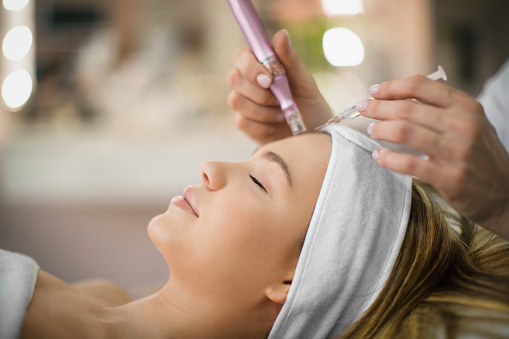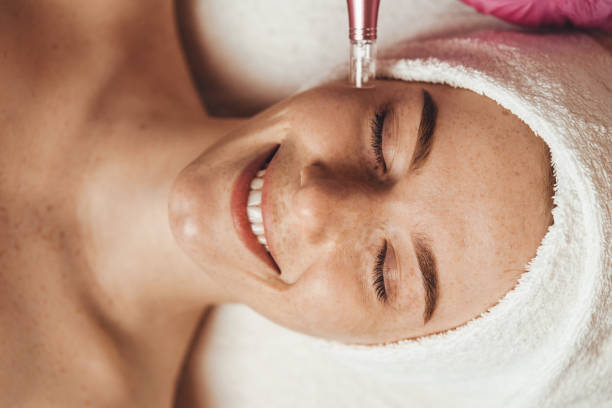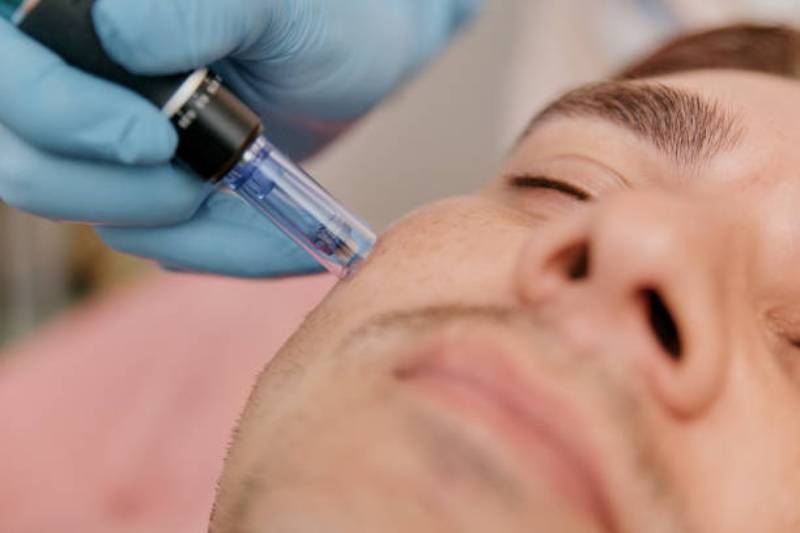Micro needling is a cosmetic procedure that involves creating tiny punctures on the skin’s surface using a device called a dermaroller or a microneedling pen. The process is also known as collagen induction therapy (CIT) or percutaneous collagen induction (PCI). It is a minimally invasive treatment that helps to rejuvenate the skin and reduce the appearance of scars, wrinkles, fine lines, and hyperpigmentation.
During the procedure, the dermaroller or microneedling pen creates tiny micro-channels in the skin. These micro-channels stimulate the body’s natural healing response, triggering the production of new collagen and elastin fibers. The new collagen and elastin fibers help to plump up the skin, reducing the appearance of wrinkles and fine lines. The procedure also helps to improve the overall texture and tone of the skin.
Micro needling is usually done in a dermatologist’s office or a medical spa. Before the procedure, the skin is cleaned and numbed with a topical anesthetic to minimize discomfort. The procedure itself typically takes about 30 minutes to an hour, depending on the size of the treatment area.
After the procedure, the skin may be red and slightly swollen, similar to a mild sunburn. However, this should subside within a few hours to a day or two. It is important to avoid sun exposure and to use sunscreen during the healing process to protect the skin.
While micro needling is generally safe, it is not suitable for everyone. People with certain skin conditions, such as active acne or eczema, may need to avoid the procedure. It is important to consult with a dermatologist or skincare professional before undergoing any cosmetic procedure.

How often should you do microneedling?
What do I need to know before microneedling?
- Choose a qualified practitioner: Microneedling should be performed by a qualified dermatologist or skincare professional who has received proper training in the technique. Make sure to research the practitioner’s qualifications and experience before booking a session.
- Avoid certain medications: Some medications, such as blood thinners and acne medications, can increase the risk of bleeding or skin irritation during the microneedling process. Be sure to inform your practitioner of any medications you are taking before the treatment.
- Prepare your skin: Before the treatment, it is important to properly clean and prepare your skin. Avoid using any harsh exfoliants or skincare products that can cause irritation. Your practitioner may also recommend a numbing cream to reduce discomfort during the treatment.
- Expect some downtime: After microneedling, your skin may be red and slightly swollen for a few days. You may also experience some peeling and flaking as your skin heals. Plan accordingly and avoid scheduling any important events or activities immediately after the treatment.
- Follow aftercare instructions: Your practitioner will provide you with specific aftercare instructions to help your skin heal properly. This may include avoiding sun exposure, using gentle skincare products, and avoiding certain activities, such as swimming or sweating, for a few days after the treatment.
By following these tips, you can help ensure a safe and successful microneedling treatment.

Is microneedling better than Botox?
Microneedling and Botox are two different cosmetic treatments that serve different purposes, and one is not necessarily better than the other.
Microneedling is a cosmetic treatment that creates tiny punctures on the skin’s surface using a device called a dermaroller or a microneedling pen. This process stimulates the production of collagen and elastin, which helps to improve the overall texture and tone of the skin. It can help reduce the appearance of fine lines and wrinkles, as well as improve the appearance of scars and hyperpigmentation.
Botox, on the other hand, is a cosmetic injection that temporarily paralyzes the muscles responsible for causing wrinkles, such as frown lines and crow’s feet. It helps to smooth out the appearance of wrinkles and fine lines caused by repetitive facial expressions.
While both microneedling and Botox can be effective in reducing the appearance of fine lines and wrinkles, they work in different ways and are often used in combination with each other for optimal results. Which treatment is best for you depends on your individual skin concerns and goals, so it is important to consult with a qualified dermatologist or skincare professional to determine the best course of treatment for you.
